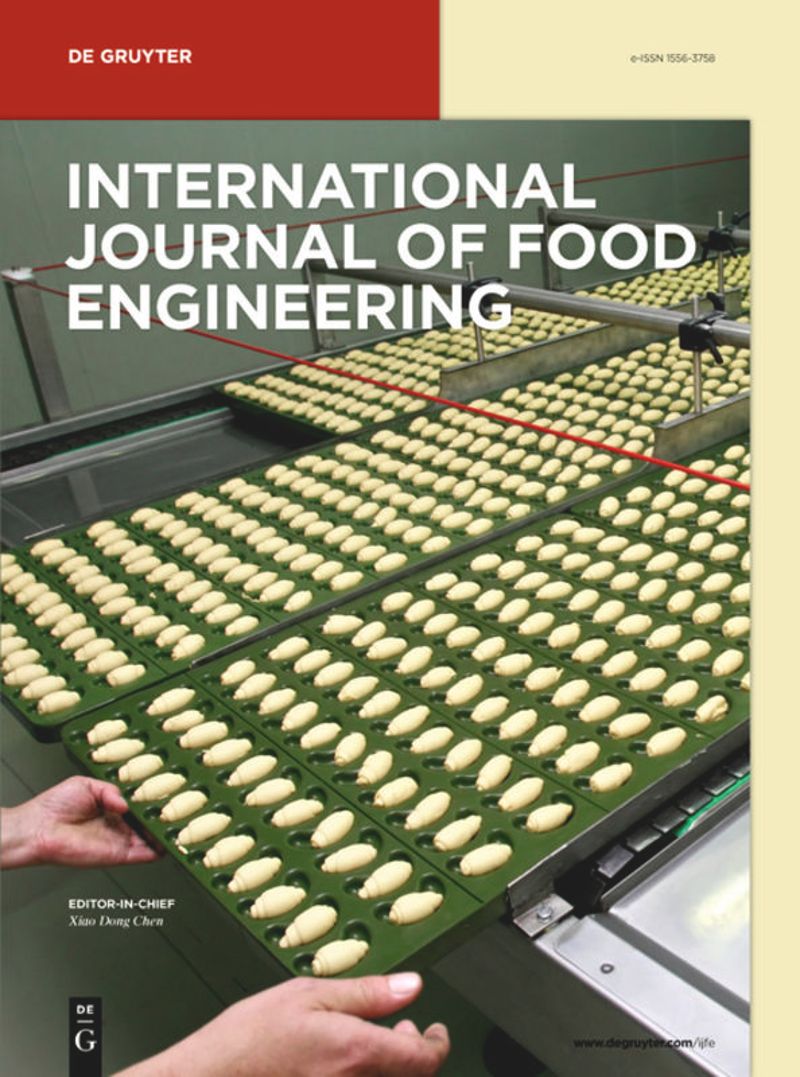微波辐射对水稻害虫致死条件的影响及对稻米品质的调控
IF 1.4
4区 农林科学
引用次数: 0
摘要
摘要针对传统的杀虫方法不能抑制水稻虫卵孵化的问题,采用微波加热的方法对水稻谷粒中的虫卵进行了杀灭。研究了微波辐射对水稻害虫的致死条件和微波辐射对稻米品质的影响,提出了既能保证稻米品质又能杀虫的工艺条件。利用微波能量密度参数评价了微波辐射对水稻害虫的致死条件。结果表明,当微波能量密度大于0.0325kWh/kg时,害虫的致死率为100%。微波功率密度和微波功率对稻米品质均有影响。结果表明,在相同的微波功率密度下,随着微波功率的增加,裂解率、垩白度和直链淀粉含量增加,而游离脂肪酸含量降低。通过对可变微波功率过程的研究发现,当微波辐照后期大米的加热速率小于0.2°C/s时,大米的开裂率和垩白度可以控制在1.5%以下。采用两级可变微波功率工艺,最终可以同时保证大米的消毒和质量。本文章由计算机程序翻译,如有差异,请以英文原文为准。
Analysis of microwave irradiation on the lethal conditions for insect pest in rice and its influence and regulation on the quality of rice
Abstract In view of the problem that conventional insecticidal methods cannot inhibit the hatching of insect eggs in rice, microwave heating was used to kill the insect eggs hidden in the rice grains. The lethal conditions of microwave irradiation on insect pests in rice and the effects of microwave irradiation on the quality of rice were studied, and the process conditions that can both ensure the quality of rice and kill insects were put forward. The microwave energy density parameter was used to evaluate the lethal conditions of microwave irradiation for insect pests in rice. The results showed that the lethality ratio of insect pests was 100% when the microwave energy density was higher than 0.0325 kW h/kg. Both microwave power density and microwave power affected the quality of rice. The results concluded that the cracking ratio, chalkiness and amylose content were increased with the increase of microwave power at the same microwave power density, while the free fatty acid content was decreased. Through the study of variable microwave power process, it was found that the cracking ratio and chalkiness can be controlled below 1.5% when the heating rate of rice at the later stage of microwave irradiation was less than 0.2 °C/s. The use of two-stage variable microwave power process can eventually ensure the disinfestation and the quality of rice simultaneously.
求助全文
通过发布文献求助,成功后即可免费获取论文全文。
去求助
来源期刊
CiteScore
3.20
自引率
0.00%
发文量
52
审稿时长
3.8 months
期刊介绍:
International Journal of Food Engineering is devoted to engineering disciplines related to processing foods. The areas of interest include heat, mass transfer and fluid flow in food processing; food microstructure development and characterization; application of artificial intelligence in food engineering research and in industry; food biotechnology; and mathematical modeling and software development for food processing purposes. Authors and editors come from top engineering programs around the world: the U.S., Canada, the U.K., and Western Europe, but also South America, Asia, Africa, and the Middle East.

 求助内容:
求助内容: 应助结果提醒方式:
应助结果提醒方式:


